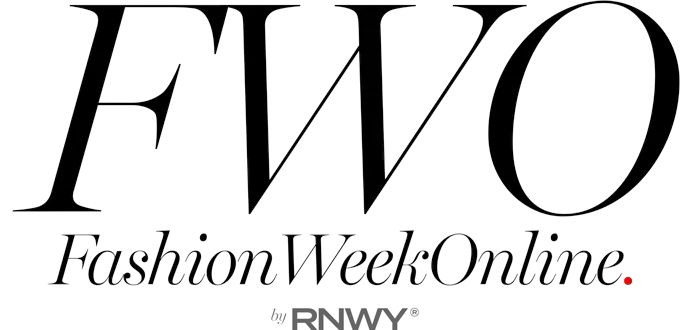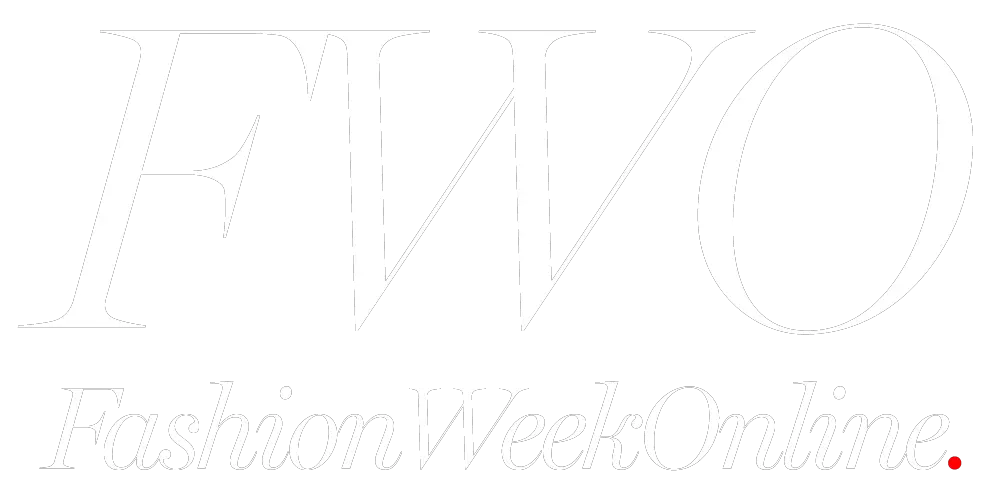Paris Fashion Week Men’s: The Definitive Guide to Menswear’s Most Influential Event
Last Updated: April 2, 2025See an error? Send story corrections here.
Paris Fashion Week Men (often simply called “Paris Homme”) is where heritage houses and avant-garde visionaries converge to define masculine style’s future. What distinguishes Paris from other fashion capitals is its unparalleled balance of traditional craftsmanship with boundary-pushing conceptual design. This comprehensive guide explores the rich history, influential designers, iconic venues, and cultural significance that have established Paris Men’s Fashion Week as the world’s most prestigious platform for menswear innovation. Whether you’re an industry professional seeking insider knowledge or a passionate enthusiast wanting to experience this creative showcase, Fashion Week Online® provides everything you need to navigate and appreciate the extraordinary world of Paris menswear.
Elevate Your Fashion Week Experience
While this guide provides essential insider knowledge for navigating NYFW, fashion enthusiasts and industry professionals can unlock additional benefits with Fashion Week Online’s VIP membership program.
VIP Fashion Week Access Pass
Your exclusive gateway to Fashion Week events in NYC, Paris, Milan, London & beyond
Essential Paris Fashion Week Resources
Before exploring the world of men’s fashion week, bookmark these essential Fashion Week Online® resources to enhance your Paris Fashion Week experience:- Paris Fashion Week Schedule – Comprehensive show and presentation listings
- Paris Fashion Week Tickets – Exclusive access to available events with special discounts
- Paris Fashion Week Insider Guide – Complete guide to navigating fashion week like a pro
- Paris Fashion Week Haute Couture – Everything about the prestigious haute couture shows
- Paris Fashion Week Venues – Iconic locations where fashion history happens
- Paris Fashion Week Hotels Guide – Stylish accommodations for every budget
- Paris Fashion Week Restaurants – Where to dine between shows
The History and Evolution of Paris Fashion Week Men’s
Paris Men’s Fashion Week has evolved from modest beginnings to become the premier global showcase for menswear innovation and excellence:The Origins: From Trade Shows to Creative Powerhouse
The formal presentation of men’s collections in Paris has a relatively recent history compared to its womenswear counterpart:- Early Beginnings (Pre-1970s) – Before the 1970s, menswear was primarily showcased through trade shows rather than dedicated fashion presentations
- 1973 Milestone – The Chambre Syndicale de la Mode Masculine established the first organized “Semaine de la Mode Masculine” (Men’s Fashion Week)
- 1984 Separation – The Fédération de la Haute Couture et de la Mode (FHCM) officially separated men’s fashion presentations from women’s, recognizing menswear’s growing significance
- Initial Focus – Early seasons primarily featured traditional French tailoring houses with emphasis on craftsmanship rather than conceptual design
- 1980s Transformation – The arrival of Japanese designers fundamentally altered the creative landscape of Paris menswear
The Golden Era: International Influence
Paris Men’s Fashion Week was fundamentally shaped by two waves of international designers who transformed the creative vocabulary of menswear:- Japanese Avant-Garde – Designers like Yohji Yamamoto and Rei Kawakubo challenged Western tailoring traditions with deconstructed silhouettes and conceptual approaches
- The Belgian Movement – Designers including Dries Van Noten, Walter Van Beirendonck, and Martin Margiela brought intellectual rigor and artistic narrative to menswear
- French Innovation – Hedi Slimane’s revolutionary slim silhouette at Dior Homme in the early 2000s redefined masculine proportions globally
- Luxury Conglomerate Investment – The 1990s saw significant expansion as LVMH and other groups invested heavily in menswear development
The Modern Transformation: Cultural Integration
The 21st century witnessed dramatic evolution in Paris menswear presentations:- Luxury-Streetwear Convergence – The 2010s saw unprecedented fusion of high fashion and street aesthetics
- Cultural Watershed – Virgil Abloh’s 2018 appointment at Louis Vuitton marked a pivotal moment for cultural inclusivity in luxury fashion
- Digital Revolution – Social media transformed how collections are presented, consumed, and interpreted
- Gender Fluidity – Traditional distinctions between men’s and women’s fashion increasingly dissolved
- Business Growth – Menswear evolved from a secondary market to a primary growth driver for luxury houses
Paris Fashion Week Men’s: The Calendar and Schedule
Paris Men’s Fashion Week follows a consistent seasonal calendar that defines the rhythm of the global menswear industry:- January Presentations – Fall/Winter collections, typically held mid-to-late January (Next dates: January 20-25, 2026)
- June Presentations – Spring/Summer collections, typically held late June (Next dates: June 24-29, 2025)
- Strategic Position – Paris shows are deliberately positioned as the culmination of the European menswear season, following London and Milan
- 5-6 Day Structure – The official calendar typically spans approximately 5-6 days of runway shows and presentations
- Schedule Release – The official Paris Fashion Week schedule is released approximately 2-3 weeks before each season begins
What Makes Paris Men’s Fashion Week Distinctive
Several key characteristics distinguish Paris Men’s Fashion Week from presentations in other fashion capitals:Artistic Vision Over Commercial Appeal
Unlike other fashion cities that may prioritize wearability and immediate commercial viability, Paris menswear shows often serve as conceptual platforms where designers explore broader sociocultural themes, artistic references, and boundary-pushing silhouettes. This approach has positioned Paris as the intellectual center of menswear.The Interplay of Heritage and Innovation
Paris uniquely balances reverence for traditional menswear codes with radical reinvention. Historic houses with centuries of tailoring heritage share the calendar with experimental designers deconstructing conventional masculine dress, creating a dynamic tension that drives menswear forward.Global Talent Convergence
Paris Men’s Fashion Week features the most internationally diverse designer roster of any fashion capital:- Japanese Influence – Significant representation from Japanese designers with distinctive aesthetic approaches
- Belgian Legacy – Continued presence of the influential Antwerp School tradition
- American Visionaries – Leading American designers choosing Paris as their international showcase
- Emerging Global Voices – Increasing representation from Africa, Asia, and South America
Cultural Significance
Beyond industry insiders, Paris menswear shows generate cultural conversations that transcend fashion, addressing masculinity, identity, and social change through clothing. This cultural relevance elevates Paris Fashion Week Men’s beyond trade events to become influential barometers of contemporary aesthetics and values.The Designers Defining Paris Men’s Fashion Week
Paris Men’s Fashion Week features an unparalleled roster of creative talent spanning established houses to emerging visionaries:The Heritage Houses
These storied maisons continue to shape the menswear landscape through a balance of tradition and innovation:- – Currently under creative direction of Pharrell Williams, combining luxury heritage with cultural currency
- Dior Men – Kim Jones masterfully blends the house’s couture legacy with contemporary influences
- Hermès – Véronique Nichanian’s 30+ year tenure represents unparalleled consistency in luxury menswear
- Saint Laurent – Anthony Vaccarello’s sleek, rock-influenced aesthetic continues the house’s influential legacy
- Givenchy – The house continues to evolve its sophisticated yet streetwise approach to modern menswear
- Loewe – Jonathan Anderson has transformed this Spanish house into a leader in artistically ambitious menswear
The Conceptual Innovators
Paris has long been the home of menswear’s most intellectually and creatively ambitious designers:- Rick Owens – American-born designer whose darkly romantic, architectural approach has created a distinct aesthetic universe
- Comme des Garçons Homme Plus – Rei Kawakubo’s menswear line continues to challenge conventional masculinity
- Yohji Yamamoto – Master of poetic deconstruction whose influence spans generations of designers
- Maison Margiela – John Galliano’s artistic vision applied to the house’s deconstructionist heritage
- Dries Van Noten – Belgian master of sophisticated pattern and color with a dedicated global following
The New Establishment
A generation of designers who have established themselves as definitive voices in contemporary menswear:- Wales Bonner – Grace Wales Bonner’s culturally rich explorations of identity and heritage
- Casablanca – Charaf Tajer’s vibrant, resort-inspired luxury with North African influences
- Sacai – Chitose Abe’s technically innovative hybrid garments
- Marine Serre – Sustainable futurism with distinctive crescent moon motifs across menswear and womenswear
- Amiri – Mike Amiri’s elevation of Californian rock-influenced aesthetics to luxury status
The Emerging Talents
Paris Men’s Fashion Week is renowned for nurturing next-generation design talents:- Bianca Saunders – British designer exploring cultural identity through innovative pattern cutting
- KidSuper – Colm Dillane’s art-driven, playful approach to contemporary menswear
- Bluemarble – Anthony Alvarez’s multicultural perspective on modern sportswear
- Uniforme – Sustainable, timeless designs with focus on responsible production
Paris Men’s Fashion Week vs. Other Fashion Capitals
Understanding what distinguishes Paris from other menswear fashion weeks helps appreciate its unique position:| Element | Paris Men’s Fashion Week | Other Fashion Capitals |
|---|---|---|
| Aesthetic Focus | Conceptual, artistic expression | More commercial, trend-focused (London, Milan, New York) |
| Industry Influence | Sets directional vision for global menswear | Often interprets or commercially adapts Paris influences |
| Designer Mix | Historic houses alongside avant-garde visionaries | More emphasis on contemporary brands or specific strengths (Italian tailoring, British creativity) |
| Presentation Style | Elaborate runway concepts and artistic statements | Greater mix of presentations, showrooms, and digital formats |
| Calendar Position | Concludes the international menswear season | Precede Paris (London, Milan) or run independently (New York) |
Iconic Venues of Paris Men’s Fashion Week
The physical settings of Paris Men’s Fashion Week contribute significantly to its unique character:Historic and Cultural Institutions
Paris’s rich architectural heritage provides exceptional backdrops for menswear presentations:- Palais de Tokyo – Contemporary art museum offering raw, industrial spaces perfect for avant-garde presentations
- Grand Palais Éphémère – Temporary structure on the Champ de Mars hosting major shows with Eiffel Tower views
- École des Beaux-Arts – Historic art school whose classical courtyards and studios host prestigious presentations
- Musée d’Art Moderne – Modern art museum providing sophisticated gallery spaces for conceptual shows
Fashion House Headquarters
Many established houses showcase collections in their own historically significant spaces:- Fondation Louis Vuitton – Frank Gehry’s architectural masterpiece in the Bois de Boulogne hosts spectacular LV productions
- Hermès Headquarters – The house’s Left Bank headquarters features a dedicated show space overlooking Parisian rooftops
- Dior Headquarters – 30 Avenue Montaigne provides an intimate setting connecting shows to the house’s heritage
Unexpected and Industrial Spaces
Paris Men’s Fashion Week often utilizes unconventional locations that contrast with traditional luxury settings:- Bercy Arena – Massive sports and concert venue transformed for spectacular large-scale productions
- Centquatre-Paris – Arts center in a former funeral home whose raw spaces host experimental shows
- Abandoned Warehouses – Industrial spaces throughout eastern Paris repurposed for avant-garde presentations
Key Trends and Innovations in Men’s Fashion Through Paris Fashion Week
Paris Fashion Week Men’s has been the birthplace of numerous significant menswear movements:Transformative Eras in Paris Menswear
- 1980s-Early 1990s: The Japanese avant-garde revolution led by Yohji Yamamoto and Comme des Garçons introduced deconstructed tailoring and monochromatic palettes
- Late 1990s-Early 2000s: The slim silhouette transformation pioneered by Hedi Slimane at Dior Homme redefined masculine proportions globally
- 2010s: The luxury-streetwear convergence accelerated by designers like Virgil Abloh at Louis Vuitton democratized high fashion while elevating casual codes
- 2020s: The gender-fluid evolution currently underway challenges binary conventions in menswear design, presentation, and marketing
Material and Technical Exploration
Paris menswear designers have pioneered innovative approaches to fabric and construction:- Issey Miyake’s Pleating Techniques – Revolutionary heat-set pleating technology creating functional elegance
- Junya Watanabe’s Technical Hybrids – Fusion of performance materials with traditional menswear
- Hermès Textile Development – Unparalleled luxury materials research, particularly in lightweight leather
- Craig Green’s Structural Experiments – Architectural approaches to garment construction and layering
Cultural Integration and Identity Exploration
Paris has led the examination and expansion of masculine identity through design:- Virgil Abloh’s Cultural Dialogues – His work at Louis Vuitton created unprecedented connections between luxury and diverse cultural references
- Grace Wales Bonner’s Cultural Narratives – Thoughtful examination of Black cultural history and identity
- Ludovic de Saint Sernin’s Sensuality – Exploration of male sensuality and vulnerability
- Rei Kawakubo’s Conceptual Questioning – Fundamental challenges to conventional masculine presentation
The Paris Men’s Fashion Week Experience
Paris Men’s Fashion Week offers a distinctive atmosphere and presentation format that sets it apart from other fashion capitals:The Runway Innovation
Paris men’s shows are renowned for their creative presentation formats:- Conceptual Environments – Immersive set designs that extend beyond decorative backdrops to integral creative statements
- Narrative Presentations – Shows structured to tell cohesive stories rather than simply displaying products
- Artistic Collaborations – Integration of live music, performance art, and multimedia elements
- Casting Evolution – Increasingly diverse and representative model casting
The Show Calendar Structure
Paris Men’s Fashion Week follows a carefully orchestrated schedule:- Opening Days – The calendar typically begins with emerging designers and contemporary brands
- Mid-Week – Established independent designers and mid-size houses present during the middle days
- Weekend Highlights – Major houses often secure weekend slots for maximum attendance
- Grand Finale – The most prestigious heritage houses typically close the week
The Business of Paris Men’s Fashion
Beyond creative presentations, Paris Men’s Fashion Week serves crucial business functions:- Wholesale Buying – Major retailers place seasonal orders following runway presentations
- Showroom Experience – Most collections are available for closer examination in showroom environments
- Investment Showcase – Emerging designers connect with potential investors and business partners
- Creative Recruitment – Industry talent scouts identify new design and styling talent
How to Experience Paris Men’s Fashion Week
While many official shows require industry credentials, there are multiple ways for fashion enthusiasts to engage with Paris Fashion Week Men’s:Attending Shows and Events
Several pathways exist for fashion enthusiasts to engage with Paris Fashion Week Men’s:- Off-calendar shows: Fashion Week Online® offers exclusive access to select independent designer presentations and events occurring during the official fashion week
- Industry adjacent events: Exhibitions, pop-ups, and store events often coincide with the fashion week calendar and welcome public attendance
- Digital participation: Many brands livestream their shows or create immersive online experiences accessible to global audiences
Navigating Paris During Men’s Fashion Week
The fashion week transforms specific areas of Paris, with activity concentrated in several key neighborhoods:- Le Marais: Historic district housing numerous showrooms and concept stores
- Tuileries/Palais Royal: Central areas where many major shows take place
- Saint-Germain-des-Prés: Traditional home to artistic and intellectual fashion dialogues
- 16th Arrondissement: Location of many established fashion houses’ headquarters
Digital Transformation of Paris Fashion Week Men’s
Technology has fundamentally transformed how Paris Fashion Week Men’s operates and reaches audiences:Evolution of Presentation Formats
The traditional runway show has evolved in the digital age:- Hybrid physical-digital experiences: Shows designed to create content for both in-person and online audiences
- Virtual showrooms: Digital platforms allowing buyers to explore collections in detail
- Fashion films: Cinematic presentations that expand creative possibilities beyond live runway constraints
- Livestreaming: Real-time global access to previously exclusive events
Social Media Impact
Digital platforms have democratized access while creating new industry dynamics:- Immediate global dissemination of designs formerly seen only by industry insiders
- Rise of influencers as important opinion leaders alongside traditional fashion media
- Direct designer-to-consumer communication bypassing traditional gatekeepers
- Community building around specific designers, aesthetics, and fashion subcultures
Paris Men’s Street Style: The Distinctive Character
The street style scene surrounding Paris Men’s Fashion Week has its own unique characteristics:The Artistic Approach
Paris men’s street style reflects a distinctly artistic sensibility:- Conceptual Dressing – Outfits built around artistic concepts rather than trends
- Monochromatic Sophistication – Nuanced approaches to single-color dressing, particularly black
- Silhouette Focus – Emphasis on proportion and shape over decoration or branding
- Intellectual References – Clothing choices that communicate cultural and artistic knowledge
- Japanese Influence – Strong presence of Japanese design philosophies and layering approaches
The Key Locations
Paris men’s street style photography clusters around specific locations:- Palais de Tokyo Plaza – Primary street style hub during major shows
- Tuileries Gardens – Elegant backdrop with natural light favored by photographers
- Place Vendôme – Luxury context for capturing sophisticated style
- Le Marais Streets – Vibrant neighborhood capturing more eclectic, youth-oriented styles
Future Directions for Paris Fashion Week Men’s
Several emerging trends suggest the future evolution of Paris Fashion Week Men’s:Calendar and Format Evolution
The traditional fashion week structure continues to adapt:- Gender Integration – Growing trend toward combined men’s and women’s presentations
- Digital-Physical Hybrid – Continued development of complementary virtual components
- Presentation Diversification – Expansion beyond runway format to alternative presentation methods
- Seasonality Reconsideration – Questioning of traditional seasonal presentation model
Sustainability Leadership
Environmental responsibility is increasingly central to Paris Men’s Fashion Week:- Carbon Reduction Initiatives – Efforts to minimize the environmental impact of presentations
- Circular Design Prominence – Growing focus on regenerative approaches to fashion creation
- Material Innovation – Presentation of new environmentally responsible textiles
- Production Transparency – Greater disclosure of manufacturing processes and impacts
Cultural Diversification
Paris Men’s Fashion Week continues to embrace greater global diversity:- Global South Representation – Increasing presence of designers from Africa, Latin America, and South Asia
- Cultural Perspective Expansion – Broader range of cultural narratives and references
- Inclusive Casting Evolution – Continued progression toward representative model casting
- Traditional Craft Integration – Incorporation of global craftsmanship traditions



